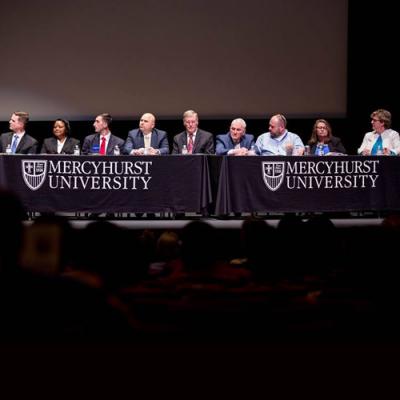The Candidates on Innovation, Business, and the Future
With less than three weeks until polls open, Erie's mayoral candidates weigh in on redevelopment, industry, and their plans for our city.
There's a lot a mayor has control over – taxes, infrastructure, public safety. And there's a lot a mayor does not have control of – schools, job creation, weather.
While a mayor exerts control over your property taxes, he or she can indirectly impact things like job creation by creating smart policy to incentivize businesses to stay – or to relocate to the city. He or she has the ability to create more policing for the region, and can also be a cheerleader for education, for instance, by boarding a bus and taking the first seat on the way to Harrisburg to advocate for fair funding and other state-level measures.
Any way you slice it, a city's executive is seen as the go-to person in any crisis. Whether or not said crisis is directly under the mayor's jurisdiction, citizens see the mayor as the person to address it – either through action or advocacy – in many ways similar to how wins and losses on the national level fall first at the feet of a president instead of a congressman.
Political pendulums swing back and forth based on which direction they've been swinging in the past. After a long conservative agenda, voters tend to favor more centrist or liberal politics, fearing a stay on the right might result in pushing even further to the right. American democracy – by design – moves slowly and for the most part intentionally, even at the local level.
Whether or not voters look favorably on the overall impact of the three terms of current Erie Mayor Joe Sinnott, most would agree that his administration's approach has been one of fiscal responsibility first. Compared to those he succeeded, he's been terse with media, has offered fewer public appearances, and put a premium on viewing the role of mayor as a manager.
The Sinnott administration's austerity measures did bring the city back from the brink of Act 47 – and history will likely record this as the great accomplishment of his time in office. But after 12 years of a finance-first approach, voters seem hungry for a mayor who will have more of a public persona – much like when they chose the fiscal austerity of Sinnott to the fiscally liberal approach of the Filippi administration he followed.
This issue hits stands throughout Erie on Wednesday, April 26, leaving 20 days for voters to decide who they think is best equipped to lead Erie forward into the third decade of the 2000s. When we first started mapping the coverage of this race in January, I asked Editors-in-Chief Brian Graham and Adam Welsh and Managing Editor Nick Warren to submit the top four things they cared most about when judging the quality, caliber, and capability of Erie's next mayor. Each submitted his thoughts independently. I added my own, and those helped color and guide February 15's feature: "What History Will Erie Elect to Make?"
Since then, we've offered a brief overview of the City Council race – which is twice as populated with candidates and matters just as much as the mayoral race – and resumed our mayoral coverage April 12 with a look at why debates and forums matter in the run-up to the May 16 primary.
We've now come full circle and are back to those key concerns we identified: advocating for smart placemaking, building up new initiatives like Erie's Innovation District, and implementing Erie Refocused, amongst others.
We tossed all of our responses into the proverbial editorial blender and Nick Warren dished out the questions in the same serving size to each candidate. On the same day. With the same directions. All in fairness to the candidates.
In the Erie Reader's perennial I2E issue – a look at innovation, entrepreneurship, and the economy – we're featuring the candidates in their own words.
Their responses are telling. First, does a candidate jump off of the stump? Do they have a stump from which to jump? Can they pare their longer, more eloquent – or bloviating – responses to short, concise answers?
That is: When pressed, what comes out?
Below, in the order in which they appear on the ballot, you'll find what stood out to us. The print piece serves as an amuse-bouches to full entrees, which you'll find unedited, unabridged, and ready for consumption online in this very article.
In the last issue before May 16's primary elections – which hits stands May 10 – you'll find our last look at the candidates. We'll dive deeper into these answers, focus on how the candidates perform in debates, and assess the field as it stands less than a week from the opening of the polls.
NOTE: The following responses appear as the candidates sent them. Responses appearing in the print edition were edited for length. Questions marked with an asterisk* did not appear in the print edition.
Erie Reader: To you, what is innovation? What makes Erie innovative? What would make Erie more innovative?
DEMOCRATS
Rubye Jenkins-Husband:
Innovation is transformational, new ideas, and advances in technology. What makes Erie innovative are plans for the Erie Downtown Innovation District.
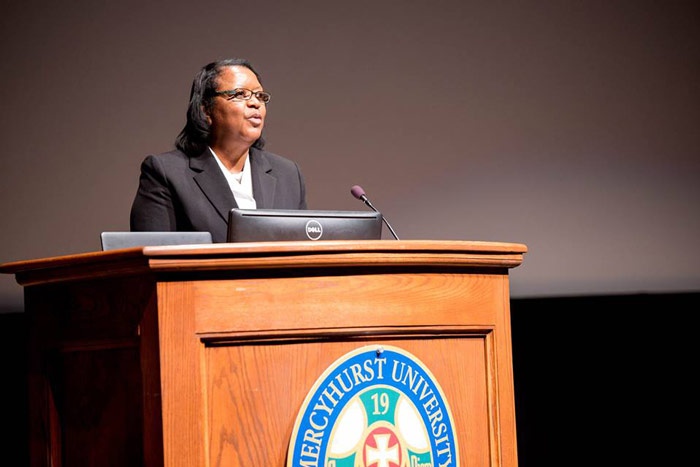
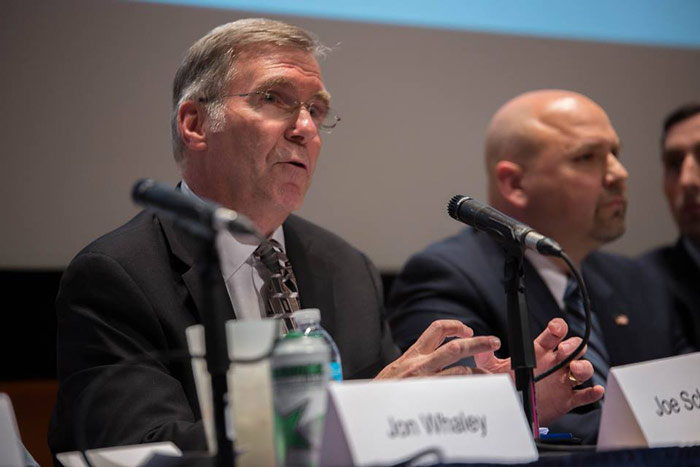
Joe Schember:
Innovate means to pioneer new approaches and technologies that move the Erie Community forward and improve our lives.
Here is what makes Erie Innovative now:
-
Shared work environments like Radius Cowork in the Renaissance Center. Here entrepreneurs work side by side in a very low cost environment ($11 per month) to create new businesses.
-
Incubator Programs, such as Gannon University's where 31 startups are currently creating new programs.
-
Existing employers are also innovating. For instance, UPMC Hamot's Dr. Stephen Kovacs is innovating an Online Medic
-
al Opinion Center that provides expert medical second opinions. Dr. Ferdinando Mirarchi innovated a technology for recording end-of-life wishes to make clear the person's preferences for emergency treatments.
-
Erie Insurance Exchange innovated the use of drones in claims and underwriting processes. They were also the first insurance company to offer insurance to Uber drivers.
-
Local Business Leaders are quietly working on innovations. For instance, Pat Black is moving forward on a medical marijuana growing facility, called Calypso Enterprises, at SB3 Industrial Park.
-
PACA, located at 1505 State Street, is a successful enterprise that encourages the arts and startups by providing low cost work space.
-
Nonprofits like Ben Franklin Technology Partners provide funding for innovative projects.
-
The Erie Innovation Fund, a partnership of Ben Franklin Technology Partners and Erie County Gaming Revenue Authority, fund early stage tech based companies and established companies with less than 500 employees.
Here is what would make Erie more innovative:
-
Creation of the Innovation District in downtown Erie.
-
Additional grants to existing organizations to complete their vision. For instance PACA has the vision of creating Live/Work spaces.
-
The Community College and the Innovation District, for which the Erie Community Foundation is providing startup funding, will help innovation. The ECM should continue to fund this type of work.
-
As Mayor, I will leverage existing CEOs and businesses. For instance, UMPC is doing a lot of medical innovation. I would travel with the County Executive to Pittsburgh and build a relationship with Jeffrey Romoff, President and CEO of UPMC, so he will locate more of their research and development in Erie.
-
Incentives for people to be innovative here. This would help us to retain more talent and stop "brain drain".
-
More opportunities for design competitions.
Lisa Austin:
Perry's and Dobbins' bold building of "a fleet in the wilderness" embodies the "all in" commitment and innovative risk-taking Erie must embrace. Erie has many untapped assets: varied industries, transportation options, and long-time residents, new Americans, college students and imported professionals. To encourage innovation and entrepreneurship and to leverage what already exists, we must focus on becoming a digitally-progressive, physically-connected and walkable city expanding projects like Innovation Erie and offering exciting networking and funding opportunities like Pittsburgh's Sprout Foundation.
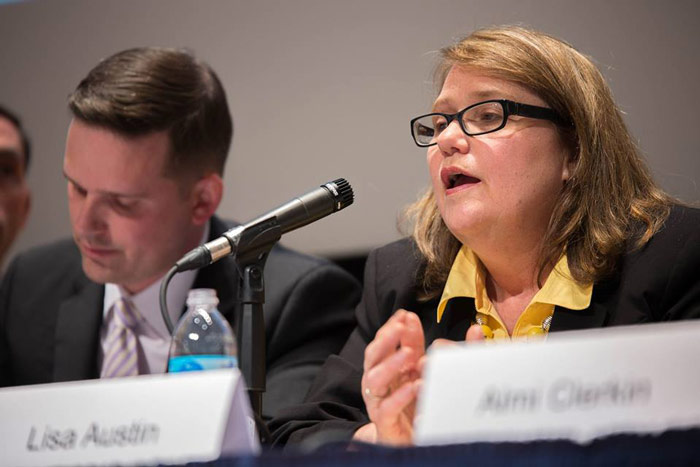
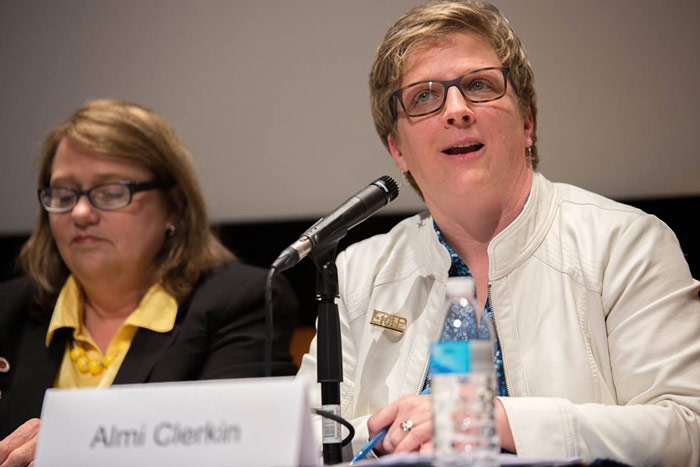
Almi Clerkin:
Innovation is finding a new way of doing something, changing the rules and finding a new way to approach a situation. What makes Erie innovative is the creativity and ingenuity of the people who live here. There are a lot of innovators living here and doing great work, so the spirit of innovation is alive in Erie. We need to embrace that and support innovation and entrepreneurship. The development of the new Innovation District – and the financial investment in it – is promising. Innovators need affordable office and development space, access to qualified employees and infrastructure to support their efforts. We also need to do a better job of telling our story, getting word out across the state and the nation about all the great innovation happening here. That's the Erie we ought to see making national news.
Bob Merski:
Innovation is not just limited to businesses or government; it is an entire way of thinking. Innovation is not just limited to the business or government sectors, but also can be applied to our schools, community development, and how we integrate New Americans into everyday Erie life. I would like to see Erie support and encourage pushing the limits of whatever our citizens do. Innovation often comes with risk and breaking the status quo. If we as a city cannot support those who are willing to take risks for big rewards, then Erie won't be viewed as a place where new ideas flourish and developed.
Steve Franklin:
Innovation, to me, is a way to better people's lives via implementation of a new idea, device or method, thinking "outside the box" as the saying goes.
What makes Erie innovative is its ability to foster its continuing engagement in the many available initiatives that promote the needed partnerships so critical to regional objectives. Erie will become more innovative as it expands these efforts and realizes future successes thereby encouraging even further innovation and success.
Jay Breneman:
Innovation is our ability to adapt, inspire, and renew. Erie is blessed to have an innovation framework because of its historic role in American manufacturing. Erie has always been a community that has resolved to innovate, but over the past two decades we've allowed lackluster political forces to stand in the way of progress. Erie has the entrepreneurial tools it needs to be a region of distinct innovation. Now it needs the political leadership to match.
REPUBLICANS
Jon Whaley:
Innovation is finding a new/better/faster way to do something. Whether that's a product, a process or a service. Erie is not innovative. City Hall runs like it's 1970, downtown looks like it did when I came to Erie in 1985 and many people from Erie have never lived anywhere else, worked anywhere else or demanded new ideas from elected officials. For Erie to be more innovative, it needs to COMPLETELY reinvent itself. Painful changes must occur. Erie must manage itself in new ways, adopt technology, and create an ecosystem that encourages change. The mayor must be the change agent.
John Persinger:
- Innovation is the process of creating new ideas and concepts.
- Erie is innovative because, despite our challenges, people are creating new ideas and concepts for business, for how to live, and for how to play.
- Erie would be more innovative if it had a mayor that was a champion for the City's innovators and proactive in connecting local businesses and residents with opportunities and potential partners outside of the City's limits.
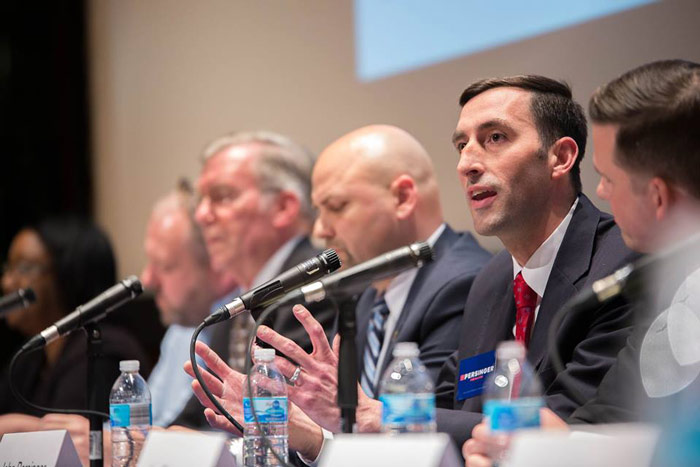
ER: With Erie being one of 38 municipalities in the county all vying for the same business, what will you do to both foster new growth and retain the businesses we have?
RJH:
I would meet with new businesses and existing businesses in our city, to discuss business needs to retain and attract new businesses.
JS:
Rather than compete, we need to work with the surrounding municipalities. We are one community. We need to build relationships with surrounding municipalities for the good of the region. We need to create a regional identity that fosters innovation and growth. I will be a Champion for business leaders.
Local entrepreneurs tell me that it is easier, faster and less expensive to build outside Erie. As their Champion, I will be actively involved in their projects from the beginning to the end.
Erie has a shortage of people who are workforce ready. We need to expand programs like The Eagles Nest that has placed over 100 young adults in full time jobs at UMPC Hamot and Erie Homes for Children and Adults. Erie Insurance, UPMC Hamot and St. Vincent's have a growing need for insurance and medical professionals. The Community College will help prepare people to take on these roles.
LA:
To leverage Erie's density and businesses, people and ideas (John Norquist's wealth of cities) we will showcase assets on-line, through media and in city hall itself. We will consult with employers and prioritize policies to foster job growth. We will streamline the permitting process and address outdated zoning issues. Working through the Erie COG (Council of Governments), County Planning, and municipal (and business) leaders, we will leverage the findings of Destination Erie / Emerge 2040 to improve services and foster sustainable growth – as a region.
AC:
We need to reclaim our role as the hub of northwestern Pennsylvania. We can foster new growth and retain business by making Erie the place to be. We can make Erie business-friendly by providing employers with a trained workforce to fill their jobs. That's why I support the community college initiative, and it should be located in the city. The community college should work with current businesses and those considering Erie to assess their workforce needs. Infrastructure like fiber internet connections, smart parking meters, better lighting and security cameras in the city all make Erie more business-friendly. Some of those things can be funded by public-private partnerships, grants and other funds that don't place an additional burden on taxpayers.
BM:
First, we need to make sure we are meeting the needs of the existing business that are here currently. Far too often Erie rolls out the red carpet for out of town investors, while doing nothing for local businesses who want to expand. That is why I continue to host local business roundtables to hear their concerns and find positive solutions to their problems. By being loyal to those who invested in this community, it will send a strong signal to potential investors outside of Erie that we are a town that takes care of our own.
SF:
Insure that all new businesses, as well as established businesses are educated in developing a business growth strategy that brings the most results from the least amount of risk and effort, consisting of sound business principles.
JB:
Erie is our region's urban core and should be the center of regional innovation, as well as the reason that many manufacturers choose the City or one of our neighboring municipalities. As your next Mayor, I will support the innovation district, our local universities and industries that conduct research and development, and my administration will target state and federal funds to strengthen infrastructure, while working to restore confidence in municipal leadership.
JW:
Small business growth will save Erie and must be nurtured. I will be Erie's #1 salesman and cheerleader. I will staff City Hall with competent, talented and experienced leaders. Our economic development folks to talk to every current Erie business to see how we can help and see what they need. We will offer loans, grants, advice and help to all businesses. Retain and recruit. We will innovate and create opportunity, like Milwaukee did with its water research park – we will never again be beat like that. The local colleges should be turning out entrepreneurs who stay in Erie.
JP:
As mayor, I will do three things:
(1) Invest in Education - we have to have a good, quality, public school system in the City
(2) Clean Up Erie - we have to get rid of the blighted properties and the drug-fueled violence; and
(3) Fight for Erie's Future - we have to have a mayor who is willing to travel to D.C. and Harrisburg to collaborate with federal and state officials.
ER: What current obstacles, if any, are holding back new businesses from flourishing, specifically in terms of current regulatory practices?
RJH:
Reaching out to business owners, our conversation would include any obstacles, if any, that are holding back new businesses from flourishing.
JS:
In addition to the obstacle of workforce preparedness described above, there is a need for review and revision of two regulatory practices:
-
Zoning variances are difficult to get. We need to simplify and streamline this procedure for new projects that will benefit the city.
-
Prioritize and expedite new major projects that include significant job creation. This would include consolidating multiple hearings.
LA:
Business owners have complained about lengthy waits in obtaining city permits. These delays result in costly extension of construction time, thus delaying income-generating activity. Our zoning code, while well intentioned, is not cultivating mixed-use construction or renovation. We must examine the form-based code adopted by Buffalo to encourage economic development and reinvestment in the city. In addition, we must take advantage of regional, state and federal funding opportunities (such as the now underutilized CRIZ program) to encourage urban economic development.
AC:
If we want to know what obstacles businesses are facing, you need to listen to business leaders and up-and-coming entrepreneurs. They know what's keeping them from flourishing, and we need to listen. In the city, I think it has less to do with regulatory practices and more to do with the perception of our city and the comparatively high taxes. We have to compete with Millcreek, Harborcreek and other municipalities where taxes are lower and that are perceived to be safer. Business attracts business. As more businesses see the value in a commercial hub in the city, I think growth will happen organically. The best place to locate a business you want to succeed is next to a business that's already succeeding.
BM:
Many of the obstacles that hold back development of new business are at the state level. For example, Pennsylvania's Corporate Net Income Tax rate is the highest in not only in the Northeast US, but also in the Great Lakes region as well. Erie is wedged between two states that have a significantly lower CNI rate or in the case of Ohio, none at all. As mayor, I would lobby to at least bring down the CNI rate to a level more in line with the region.
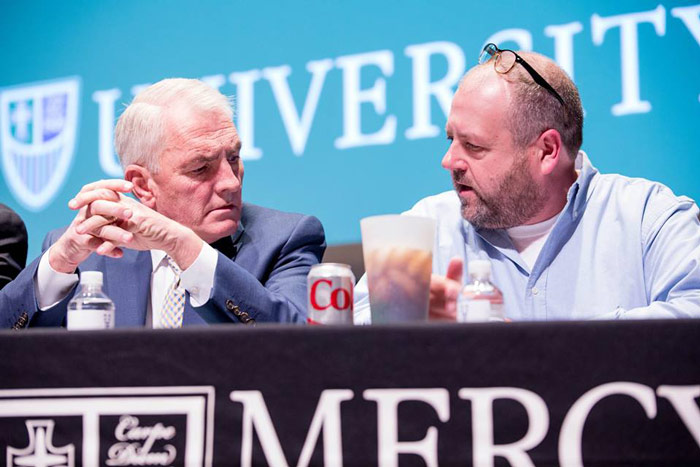
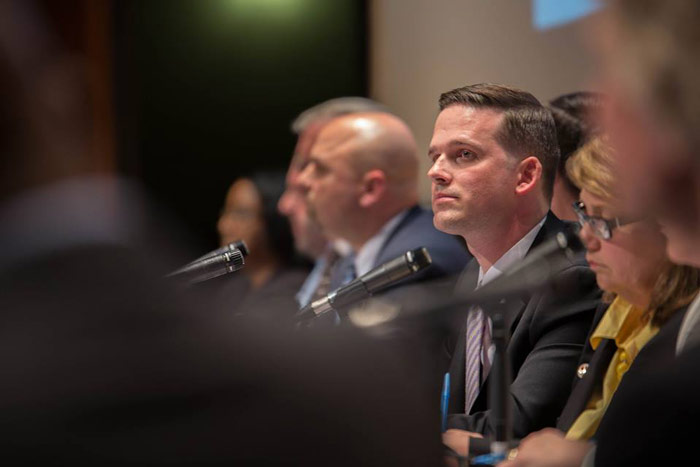
JB:
Erie's convoluted LERTA program, matched by a hands-off attitude by City Hall, and a general practice by its political class to fail in getting its own act together, all contribute to a lack in confidence in Erie's market by area investors.
JW:
As the only business owner running for mayor, I have first-hand experience here. I don't think ANY regulatory practices are holding any business back. Those are excuses. Those are empty words, spoken by politicians who have NEVER created one job. Erie and America needs rules and regulations. The tax rate in America used to be 90% yet Ford, GE, and US STEEL flourished. I pay health care for my employees, that's the cost of doing business. Now, if you can't get a building permit on-line, can't get an inspection on-time and can't get help from the city, that's the problem
JP:
From a local perspective, the combined City and Erie School District taxes discourage businesses from investing in the City, their business, and their employees, which stifles these businesses' ability to innovate and grow.
ER: How do you see driving Erie's downtown development now, and how will you work with these major players to revitalize downtown?*
RJH:
I would meet with the Downtown District Organization, business owners downtown, neighbors in the downtown area, private and public stakeholders, to discuss the action plans in the Refocused Erie comprehensive plans including streetscape, the innovation district, and transportation.
JS:
Over the last several months, Erie has more private investment announced than any other city our size in America. Specifically the announcements that impact downtown are: Erie Insurance, UPMC Hamot, Velocity Net, and Scott Enterprises. I will be their champion. I will maintain a close relationship with developers to insure there are no problems or delays. I will stay engaged, meeting with them frequently from beginning to end, including sitting in on planning meetings and insuring proper resources are dedicated to their efforts. I also want to coordinate Erie businesses' 10 year plans with the City's 10 year plan. This includes working with them to identify and pursue state and federal funding for infrastructure to support their investments. Right now we are leaving a lot of state and federal money on the table.
LA:
We will work closely with UPMC Hamot, Erie Insurance, McManis & Monsalve Associates, Velocitynet, Mercyhurst, Gannon and others to prioritize available funding and staffing in support of the Erie Refocused Action Plan (along with a community benefits agreement) to foster a walkable, attractive Innovation District that will help spur a city-wide transformation.
AC:
I served on the board of the Erie Downtown Partnership, and they've done some great work partnering with business owners and connecting people to grants and funding sources. The Erie Redevelopment Authority has played a major role as well. UPMC Hamot, Erie Insurance, Erie Events and Gannon University have done a lot for downtown, from lighting and infrastructure to major construction projects. All of those players have helped reenergize downtown Erie and in many ways, they're already working together and bringing in others like the Erie Community Foundation. Businesses like Velocity Net see the good things happening in the city and are investing here now. So those partnerships need to continue, and as mayor, I'll keep bringing all of those people at the table, meet regularly with them, walk the streets and hear their concerns, and do what I can to connect businesses and people with the resources they need. Success of all the major players is interdependent and we need a healthy downtown for all of them to succeed. As mayor, I'll make sure that word gets out locally, statewide and nationally that Downtown Erie is open for business.
BM:
If you look at the organizations with current building permits, they are organizations like UPMC Hamot, Erie Insurance, and Gannon University. For the foreseeable future they are going to be driving development downtown. As mayor, I want to ensure their employees can enjoy their experience downtown, listening to what their needs are and figure out solutions to problems that may arise.
SF:
The establishment of the Innovation District within the core area of downtown Erie as well as the establishment of a Community College to prepare and provide a trained workforce for our area is critical to future success in our region and to maintain our economic competitiveness.
JB:
Area business owners and investors, like Velocity Network, are taking a risk by investing in Erie's downtown, despite all of the conditions working against them in making or keeping these investments. I will take a proactive stance in easing the access to capital, reduction of process delays, and a concerted effort to walk side-by-side with area businesses in incentivizing continued downtown development.
JW:
Erie Insurance is #1. As a publicly traded, for-profit firm, its choices are welcomed and will help Erie move forward. Myself and key members of my team will work hand in hand with all of these players. They will have my private cell number. I am all for city wide LERTA and Erie Insurance should enjoy 10 years tax-free. The city MUST coordinate all its efforts to help this process. Gannon, UPMC Hamot and ALL of the small & medium sized businesses downtown deserve help too. Coordinate all the myriad plans floating around and unite into one.
JP:
As mayor, I will take the lead and coordinate the various private sector stakeholders that invest in downtown, along with the county, state, and federal governments, to ensure that efforts are aligned and resources are being used efficiently to get Erie working again.
ER: What specifically will you do to make sure that these businesses will be responsibly taxed, with the money going back into the city?*
RJH:
While serving on City Council, I advocated the development of the Walmart store at the Elm Street location, bringing jobs and taxes to Erie.
JS:
Erie Insurance, Scott Enterprises and Velocity Net will pay full taxes based on current tax law as private enterprises. St Vincent's and Hamot will continue to pay their 50% Payment In Lieu Of Taxes on the new development.
LA:
Tax-exempt properties are largely vetted at the state level, but, we must address the current practice of eliminating or minimizing taxes on waterfront / water view property. The city should make regular audits of the business taxes, as it does to reassess residences. In addition, we will explore policies that encourage business structures (from sole proprietors, partnerships, corporations and single and multi-member limited-liability corporations) to both produce investor profits AND fair tax payments to the city.
AC:
If you're a tax-exempt nonprofit, you have to support the community in some way. That's a legal distinction that has to be met. If that's not being met, then your tax-exempt status should be revoked. The reality is, we have a lot of great partners in the city who happen to be tax-exempt, and who do meet their obligations to the community. You also have those who go above and beyond, who enter into P.I.L.O.T. (Payment in lieu of taxes) agreements with the city, or who continue to pay taxes on property they purchase, so it's important that we acknowledge that. The problem isn't that there are too many tax-exempt property owners – the problem is that there are too few for-profit businesses operating in the city. If we bring more businesses into the city and increase the tax base, then we can get to a point where we're talking about lowering taxes instead of having to consider raising them.
BM:
Many of these organizations are non-profit as they are either hospitals or educational facilities. UPMC Hamot currently has a PILOT program which they make agreed upon payments to the City in lieu of paying property taxes like other for-profit organizations would. I would like to work with the non-profit organizations in downtown to expand PILOT programs as necessary, so that the public services the city provides to all of Erie's people and businesses are properly funded.
SF:
Work closely with the City Planning Commission on future taxable properties to insure that each one is taxed at fair and equitable tax rates based upon the use of the property.
JB:
Erie's businesses are paying an ever growing share of taxes while receiving less bang for their buck. I will foster a rising tide of investment downtown so that their investments become more stable, and so that they continue to invest in Erie's urban core
JW:
There are numerous organizations that will be approached to pay more taxes or face lawsuits. Millcreek recently took LECOM to court and won. If a local non-profit can pay its CEO $450,000 a year, they can pay property taxes. Period. MY administration will fight anyone not paying their share. We will lobby the state aggressively to change the wording on the Bayfront hotels tax situation. I support 100% city wide 10 year LERTA for all new construction. There are also hundreds of properties whose assessments are far lower than recent sales prices and we will challenge those in court.
JP:
As mayor, I will enforce the tax laws and work with all businesses and organizations - private and not-for-profit - to figure out how everyone can contribute and work collectively to solve Erie's numerous challenges.
ER: In regards to Erie's younger population (i.e. 20-40), what would you and your administration do to ensure that Erie is seen as a place to stay – or relocate to – in the spirit of entrepreneurship and innovation?
RJH: Job innovations and advances in technology would attract Erie's younger population to stay, and/or relocate. I will support job innovations, creations, and advances in technology.
JS:
As Mayor of Erie, I will take the following steps to encourage 20 to 40 year olds to stay in or relocate to Erie:
-
Create a task force of 20 to 40 year olds (comprised of both current residents and those who have left) to recommend strategies for brain gain.
-
The Innovation District will provide great jobs for millennials. Related to this we will also:
-
Continue and expand the 8 Items listed in Question 1 that make Erie innovative now.
-
Implement the 6 items in Question 1 that will make Erie more innovative.
-
Encourage building of more single bedroom, 600 square foot apartment complexes in downtown Erie. This is where and how millennials want to live.
-
Create Walking and Bike Paths
-
Create a Bike Share System.
LA:
Erie can attract/retain a younger population by leveraging the "wealth of cites" to increase density, encourage culture, shopping and nightlife. We must promote and celebrate diversity and prioritize walkability and good transit. Let's establish a "welcoming center" for new visitors and residents and engage them as volunteers or interns. Erie ex-pats live around the world. We must engage them in a conversation about the city's future and celebrate excellence, as in the Washington-Weber film "1,000" and by establishing "Innovator-in-Residence" and "Sister-City-Visitor" (along the lines of the Poet Laureate).
AC:
We need to support the spirit of entrepreneurship and innovation not just by being a place where people want to work – we need to be a place where people want to live and play, too. We've got to have housing that meets the needs – and price range – of young professionals, and we need to make home ownership a possibility for people who are just starting their career and family so that young people establish roots in the city. We've seen multiple projects that didn't meet expectations because the housing was priced too high for the market, so we need to encourage development that meets the demand of potential buyers. Programs like LERTA also help make ownership possible for first-time home owners.
Erie already is a great place to play. As an executive director in the arts and cultural sector, I see how much our community has to offer. Live music, theatre, art, culinary arts, sports – there is so much going on in our city every night. If the people who come here every night, lived here, too, imagine the increase in home ownership.
BM:
As part of my jobs and economic development plan, I would like to host a "Holiday Opportunity Fair" where employers can market themselves to individuals returning back to Erie for the holidays to visit family. We should seize upon that opportunity to market our city as a place for young families and potential entrepreneurs to come here and thrive, with the added bonus of being close to family and long time friends. Also, I believe my "concierge service" for start-ups to help navigate permits and zoning will be a big help for young entrepreneurs.
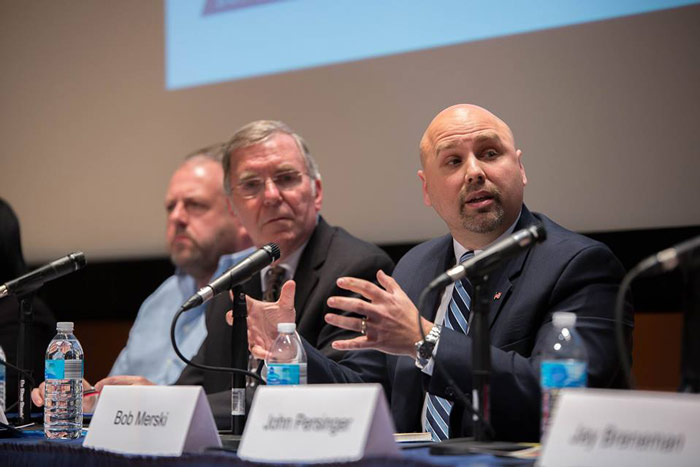
SF:
Aggressively pursue every opportunity to provide support services and partnerships that will advance each and every effort to develop entrepreneurship, especially for the younger population that represent the future of our region with their dreams and visions.
JB:
Erie's young people, like myself, want a jungle-gym of opportunity, not an escalator where we wait our turn. My administration will work with our educational institutions, nonprofits, and our private industries, to create opportunities for our young people to be involved in solving the social and economic needs of today in a meaningful–and perhaps financially rewarding–way. Entrepreneurs are problem-solvers, risk-takers, and hard workers, and it's a mindset that anyone can adopt if provided the encouragement and supports to experience it.
JW:
We need to eradicate the status quo, business-as-usual thought processes at city hall. We need a true "business incubator" with free rent, free wi-fi and grants to business plan contest winners. Encourage people to TRY. To FAIL. I will visit classes at Gannon and Mercyhurst to tell this story. Erie was founded and grown by entrepreneurs like Zurn and Behrend and we need to foster that mind set. Have get-togethers for this group monthly in "cool" places and not just drinking. PROMOTE this people and their ideas in social media and on tv/radio/print. Start gallery hops, tech tours...
JP: I will work to create a vibrant downtown, a place with plenty of affordable and desirable options for Erie's younger population to live, work, and play.
ER: What do you find to be the biggest challenges in implementing Erie Refocused? If you disagree with the plan, please tell us why.
RJH: I find the biggest challenges to be investments needed to finance the improvement plan. However, there are challenges that we can achieve through workable action plans. I would provide the leadership to accomplish the action plan goals.
JS:
Erie Refocused gives us great direction. Before implementation we need three things:
-
Obtain community input on the proposed plan and initiatives with forums throughout the City.
-
Develop a plan to finance the $60 million per year cost of implementation over the next 10 years.
-
Create a compassionate plan for relocating services for underprivileged to provide them with better services in a centralized, convenient location outside of our core.
We can learn much from other communities, such as Pittsburgh, Buffalo, Cleveland and Cincinnati, who are further along in implementing similar plans.
LA:
The principals for decision-making laid out in the Buki plan echo the advocacy and action that we in Civitas have collaboratively undertaken over the past ten years with our leadership in co-founding organizations addressing the economy, education, safety and blight (such as Preservation Erie, Innovation Erie and All Aboard Erie). To ensure implementation of "the Buki plan", we will endeavor to partner with all stakeholders to gain financial partners and overcome distrust by residents who have not been engaged or consulted in the process of gathering data, reviewing Refocused Erie or in creating the Action Plan.
AC:
The biggest challenge to any type of progress in Erie for the last decade or so has been failure of collaboration between the right stakeholders. I've learned in my career as an executive that if you don't have the right partners on board, and if you're not on the same page, nothing will get done. So for the Buki plan to be implemented, we've got to have the right stakeholders involved and on the same page. And that includes the residents; we shouldn't be moving projects forward if they're not supporting the needs of the residents.
The second biggest challenge is of course going to be funding. In some ways, the order in which pieces of the plan are implemented will be tied to what funding is available. This is what I do every day. I've managed millions of dollars in capital projects throughout my career, and it's all about connecting the dots. If it's an infrastructure project, then you look for funding, grants, tax credits, whatever the source may be, which support infrastructure.
And the third challenge is that we don't have a city planning department or city planner. In a city that's been so focused on developing plans, it's pretty remarkable that we don't have a planner. Of course, we've got to have the funding for that position, but I think that's an important step in realizing the plan. If we have the right stakeholders on board, we secure the funding, and we have a planner who can help lead the implementation, there's no reason why we can't successfully implement the plan.
BM:
While I think the Erie Refocused plan is a great guiding document, and I have implemented parts of my platform to align with the plan, I have maintained all along that the price tag of implementation is the biggest challenge. Mr. Buki suggests that we add an implementation tax to pay for the plan, which may of Erie's taxpayers cannot afford. I think of Erie residents like my grandmother, who is on a fixed income, where almost any tax increase would break her already stretched thin budget. I believe that we need to consider the cost to the taxpayers along with the potential benefits of the plan before we move forward.
SF:
In agreeing with the plan, I find that Erie Refocused is the premium plan for revitalization of the Erie community but must be tempered with sound financial engagement and best practice applications as we implement the plan. It will be through this carefully crafted implementation that we will be able to succeed where past plans have either faltered or failed to come to fruition due to unsound management practices.
JB:
The biggest challenge is a City Hall led by short-sighted officials bent on isolation. I will change that.
JW:
The Buki "plan" is NOT a plan. It is a book report, a state-of-the-city report, and it has some basic, down to earth good ideas. But it's not a plan. But I agree with almost everything Charles Buki and his team have said about Erie and its "leaders". I like the idea of 17 sub-sections of Erie… pride in your neighborhood – a distinctive identity for each. The #1 idea in the plan for each area is better code enforcement, street signs, and the like. Basic stuff that SHOULD already be done. The $600 million price tag is scaring people.
JP:
The biggest challenge is funding. The Buki Plan identifies $600 million of investment, without citing specifics or explaining where this money will come from. As mayor, I will identify the exact costs and potential funding sources to implement the Buki Plan.
ER: If you're elected and serve three full terms, what is your vision of downtown Erie in 2030?*
RJH:
My vision of downtown Erie in 2030 is a world class city. Job innovations, surrounded by healthy communities and a growing bayfront.
JS:
I am committed to serving 3 terms because I believe it will take that long to fully implement the plan and realize the vision. My vision for downtown Erie will be complete when we have:
-
A thriving, welcoming, clean, safe environment where people want to visit and live.
-
More businesses, like restaurants, retail shops, book stores, cafés, galleries, markets and a grocery store.
-
A very active Innovation District and Community College that provide the training that Erie businesses need.
-
People of all cultures walking and biking the streets.
-
The Downtown, East and West Bayfront neighborhoods connected to a thriving Bayfront with attractions that draw people, like Presque Isle does.
-
Affordable market rate housing with both millennials and baby boomers living downtown.
-
Modify existing downtown events to showcase the talents of local artists, musicians, entrepreneurs, and resident chefs, exhibiting the varied cultures and ethnic foods of Erie.
-
More events that bring people downtown, like First Night Erie.
-
Historic walking and bike paths that wind through the downtown and Bayfront.
LA:
Vision for 2030: Erie's high-end products are designed, manufactured, and marketed around the globe by the city's diverse urban residents. With a state-of-the art digital infrastructure, employers in insurance, education and health have been joined by firms focusing in cyber-security, information services, finance – and by creative businesses in animation and graphic/game/web designs, to serve regional, national and international clients (with the help of many interns from Erie's award-winning high-schools and universities). The Innovation District is a hub of start-ups, market-rate housing integrated with shopping, arts and culture venues that attract thousands of visitors from the tri-state region.
AC:
I talk a lot about wanting to build a better, brighter and bolder future, and that's what I see for Erie in 2030: a place where college graduates choose to stay and where people want to raise a family. A place where kids can get a quality public education and be safe and happy in their neighborhoods. A place where jobs abound, housing is affordable and wages are more than livable. I see a city that doesn't live in fear of one company closing its doors and taking our entire economy with it. I truly believe that, under my leadership, we will have a better, brighter and bolder future by 2030.
BM:
My vision for downtown Erie in 2030 is an area that is safe, walk able, and thriving with a mix of home grown business and outside investment. The businesses and patrons of downtown Erie would be a diverse mix of stores and people, of which we market to the outside world. I am proud of our diversity, and I will have made sure that the rest of the world knows that Erie is "ready to do business with business."
SF:
My overall vision for Erie is for it to be a vibrant healthy community that affords every citizen the opportunity to live in suitable and affordable housing; to be able to find gainful employment where they can earn a decent living; to have the opportunity to raise a family whose children can receive a quality education; to become a location of many assets that can be enjoyed by all without the fear of crime, victimization and the fear of uncertainty of the future and a place where we all, as a community, can come together with the wisdom and commitment to accomplish this vision with the downtown being the lynchpin of the region.
JB:
I envision cafes, pubs, and small shops brimming with older Erieites telling their teenage children, or out-of-town visitors about how they were part of turning Erie around and putting Erie on the map as a national success story.
JW:
There will be more energy, more buildings, and more people. Downtown will stretch from Bayfront to 18th and Cherry to Parade. There will be enforced signage and building materials standards to make it more visually appealing. A new, modern City Hall south of 12th and State (the current one sold). More market rate and upscale rentals. Many of 1,000 new workers at Erie Insurance will live, eat and play downtown. Much more retail. A thriving grocery store. Mid-town Peach Street will have grown. New buildings everywhere. More concerts and events from Erie Events. I see Gannon and UPMC paying taxes….
JP:
With the right leadership, downtown Erie will be a thriving hub of activity, where residents want to live and work and people want to visit. From the Bayfront to 15th and State, you will be able to walk on clean, safe, and vibrant streets, and enjoy all that the City has to offer. Downtown Erie will be the cleanest, safest part of the City, open to new residents and investment.
For more information:
CITY OF ERIE MAYOR
DEMOCRATS
Rubye Jenkins-Husband: facebook.com/electrubyemayor/
Joe Schember: joeschember.com/
Lisa Austin: austinforerie.com/
Almi Clerkin: almiforerie.com/
Bob Merski: bobmerski.com/
Steve Franklin: stevefranklin.org/
Jay Breneman: jaybreneman.org/
REPUBLICANS
Jon Whaley: jonwhaley.com/
John Persinger: persingerformayor.com/
Ben Speggen can be reached at bSpeggen@ErieReader.com and you can follow him on Twitter @BenSpeggen. Nick Warren also contributed to this feature and can be contacted at nick@eriereader.com.
